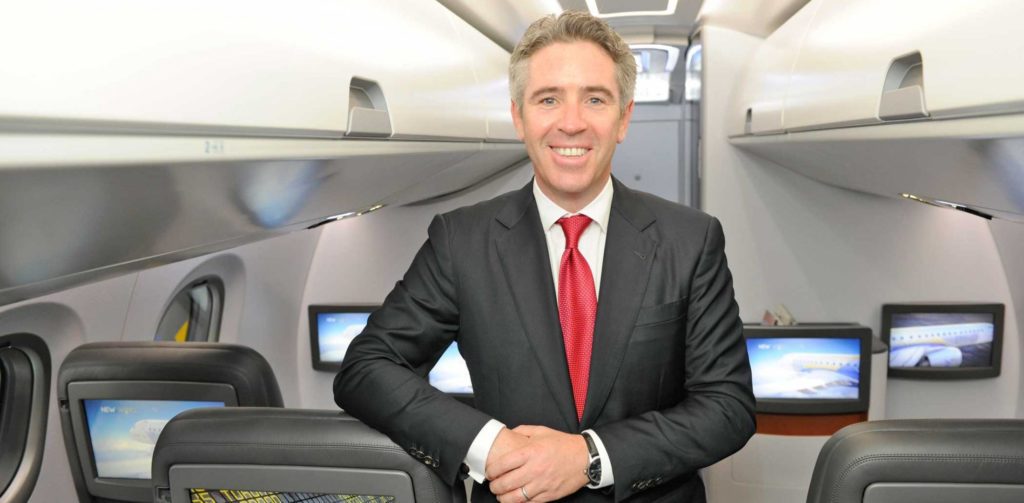The events surrounding the Boeing 737 Max will not influence “in any way, shape or form” Boeing’s commitment and resources to close the transaction with Embraer on the joint venture for the commercial aviation business, according to Embraer Commercial Aviation president and CEO John Slattery. “The creation of the new company is an enormous body of work and requires significant resources from both sides,” Slattery told AIN on the sidelines of the IATA annual general meeting in Seoul earlier this week. “The resources that were originally identified by Boeing to lead on their side of the closing of the transaction were in place well before the current situation with the Max materialized, and those resources have not been influenced at all.”
Embraer shareholders in February approved the strategic partnership with Boeing. Under the terms of the deal, first announced in July 2018, Boeing will hold 80 percent in the new company—named Boeing Brazil-Commercial—and Embraer 20 percent. The sides signed definitive transaction documents in December.
Embraer remains equally committed to the JV, he stressed. “We are celebrating our 50th anniversary this year; the Boeing Company is 100 years old. We recognize this is a very challenging moment for them, but our respect for the Boeing Company and our colleagues at Boeing runs very deep,” said Slattery. “We have full faith and confidence they will work through this jointly with their customers and all other stakeholders involved.” Slattery, who will lead the Boeing-Embraer commercial aviation and services joint-venture, said he shared the views of IATA director-general and CEO Alexandre de Juniac that an expeditious, global regulatory approval to re-certify the aircraft and return it to service as quickly as possible serves everybody’s best interest. “Confidence of the flying public in our aircraft is the oxygen from which we breathe,” he asserted.
His focus for the balance of the year, Slattery maintained, centers on closing the transaction by the end of 2019 and securing the necessary antitrust approvals. The deal requires the approval of about 10 antitrust authorities, and while most of the smaller jurisdictions have cleared the venture, all major competition watchdogs—including the EU—continue to scrutinize the tie-up. “In those conversations, we are reminding regulators that there is no overlap between the E-Jet family, the E2 family and the Boeing 737 family from a competitive dynamic,” said Slattery. “When we look at our campaign data around the world, we don’t find incidences where we are competing against Boeing. The Max 7 is 17- to 18 percent bigger [in passenger seats] than my biggest aircraft, the E195-E2, and it flies 48-percent longer. Of course, there was overlap between the Airbus A320 and Bombardier’s C Series, particularly the A319 and the CS300. We don’t have that experience,” he said.
Airbus acquired a controlling stake in the C Series program in July 2018, and rebranded the twinjet A220 and the company Airbus Canada Limited Partnership.
Whether Boeing will follow suit and give the Embraer regional jets a Boeing moniker remains undecided, according to Slattery, while pointing out that the E-Jet brand is much better established than that of the C Series. The decision, nonetheless, will have to happen before the formal closing of the transaction.
For Slattery, operating under the Boeing umbrella opens opportunities to present the E-Jet to a broader universe of customers around the world. Customers— airlines and lessors—“universally and uniformly” perceive the Embraer-Boeing combination competitively beneficial to them, he asserted. Therefore, Slattery added, some airlines have decided to postpone placing orders until the transaction’s completion. “I believe that there are campaigns that are on hold because airlines feel they will have better negotiating flexibility and more options in their discussion with both Airbus and Boeing [after] the transaction,” he explained.
The vast majority of E-jet customers also operate Boeing 737s or Airbus A320s, Slattery said. “We positioned the E-Jet initially and the E2 later on to be complementary aircraft and work in tandem with the larger narrowbodies,” he noted. “Our whole mantra at Embraer is rightsizing.”

0 Comments
Leave A Comment